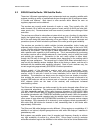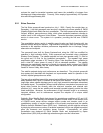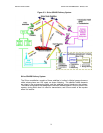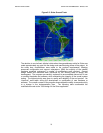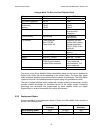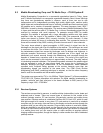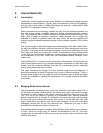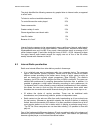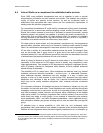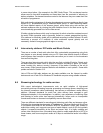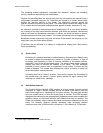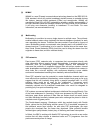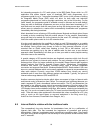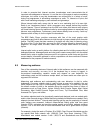DIGITAL RADIO GUIDE INTERNET RADIO
77
The study identified the following reasons why people listen to Internet radio, as opposed
to off-air radio:
To listen to audio not available elsewhere 17%
To control/choose the music played 15%
Fewer commercials 14%
Greater variety of music 13%
Clearer signal than over-the-air radio 8%
Less DJ chatter 8%
Because it is "new" 7%
Internet listening appears to be concentrated among well-known Internet radio brands
such as America Online's AOL® Radio Network; Yahoo!® Music, Microsoft’s MSN Radio,
WindowsMedia.com and Live365. Every week, these stations reach an average of 4.8
million listeners aged 12 and older during the hours of 06.00 – 00.00. Listeners to these
five major Internet radio brands account for roughly one out of four of the 20 million
weekly Internet radio listeners in the US.
6.3 Internet Radio peculiarities
Radio over Internet differs from other delivery media in three ways:
• It is a relatively new way to experience radio via a computer device. The consumer
uses a new interface (screen, keyboard, mouse) and is able to search and select
different content according to the station name, country of origin, genre or style, as
well as viewing the currently played programme ("Now Playing"). The station's
frequency (as in FM or AM) or multiplex (as often in DAB) is irrelevant. The users can
shortlist their preferences by compiling personalized favourites lists. In addition, it is
possible to generate a virtual station schedule according to one's preferences. An
"on-demand radio" is also offered by many traditional broadcasters on their websites;
this allows the user to click and play the archived programme items which were
broadcast via conventional terrestrial channels during the previous seven days or so.
• IR widens the choice of service providers. These can be traditional radio
broadcasters, new (Internet-only) stations, portals or independent users.
• Radio content on the web can differ from radio broadcasting as it has evolved over
the last century. Whereas on terrestrial networks the choice of stations is relatively
limited, there are thousands of IR stations. It is often possible to choose from a list of
most popular stations or to find a station which is playing a particular song from a
"Top 50" list. Since computers can use hard disc memory, it is possible to time shift
play out.
One of the fundamental differences between IR and conventional radio is the absence of
barriers to public transmission. Consequently, even a small, local station can potentially
become a global player, or at least an international station.



